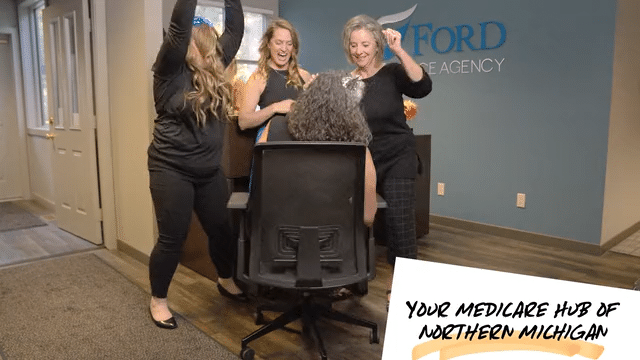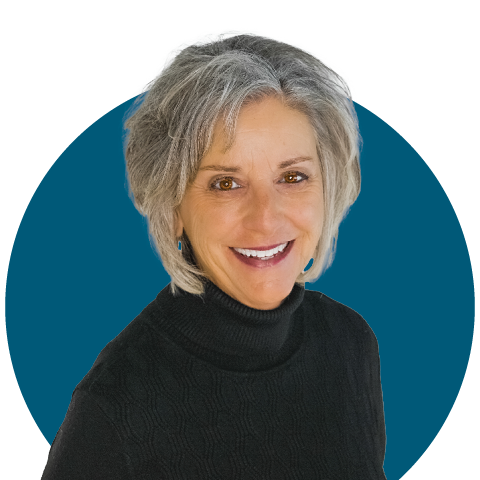Widespread Confusion About Workers’ Comp
A new survey from Atticus, a workers’ compensation and disability benefits company, shows significant gaps in understanding. Nearly half of workers worry that filing a claim could put their jobs at risk, and fewer than 60% can correctly answer basic eligibility questions. Only 29% know that insurers pay benefits rather than employers. Confusion is even greater around mental health coverage, which varies by state.
For those who did file claims, long delays and financial pressure were common. Payments took an average of five weeks to arrive, and only one-third said the benefits fully covered their living expenses. The survey also revealed generational divides, with Baby Boomers expressing more trust in the system than Millennials. Experts note that better education and clearer communication could ease fear of retaliation, support timely reporting, and improve confidence in workers’ comp protections.
At Ford Insurance, we're here to help. If you have questions about your workers' comp policy or have questions your employees need answers to, we're happy to answer them.
Why Workers’ Comp Policies Should Be Reviewed Every Year
Workers’ compensation coverage isn’t a set-and-forget policy. Businesses change, job roles shift, and risks evolve over time, which means an annual review is one of the simplest ways to protect both your employees and your bottom line.
Correct Classification Matters: Employee classification drives workers’ comp premiums, and even small errors can create big cost differences. As staff responsibilities change or new positions are added, job codes can drift from what’s accurate. Reviewing classifications each year ensures employees are placed in the right categories, reduces the chance of overpaying, and helps prevent issues during an audit.
Premiums Reflect Real Exposure: Workers’ comp premiums are calculated using factors like payroll, job type, past claims, and the business’s experience modification. These numbers shift as a company grows or contracts. An annual review allows you to confirm payroll estimates, correct outdated data, and adjust coverage to match current operations. This keeps premiums aligned with true risk instead of outdated projections.
Risk Management Isn’t Static: A yearly review also supports proactive risk management. Safety procedures, training programs, and workplace conditions evolve, and insurers look favorably on businesses that continually work to reduce injuries. Reviewing your policy each year helps identify trends, close safety gaps, and implement improvements that can reduce claim costs and strengthen your experience modifier long-term.
A Simple Step With Big Benefits
An annual workers’ comp review ensures your classifications are right, your premiums are fair, and your safety efforts are reflected accurately. It’s a straightforward way to control costs, stay compliant, and protect the people who keep your business running.
A New Chapter of Service
Ford Insurance Agency Announces Agency Expansion Acquiring Frankfort Insurance Agency
Ford Insurance Agency is proud to announce the acquisition of Frankfort Insurance Agency, effective December 1, 2025. This partnership reflects our shared commitment to exceptional service, expanded resources and a continued focus on putting clients first.
As we welcome Frankfort Insurance Agency into the Ford Insurance family, our mission remains the same: to provide the highest level of care, expertise and personalized support to every individual and business we serve. This integration allows us to offer a broader range of insurance products, deeper industry knowledge and an even stronger support team to clients in the Frankfort area—all while maintaining the trusted relationships clients have built with their long-time agent.
“We are incredibly grateful for the opportunity to become part of the Frankfort community and honored to carry forward the agency’s legacy of service,” said David Ford, Agency Principal. “This partnership strengthens what both agencies do best—protecting our clients with the attention, compassion and professionalism they deserve.”
What This Means for Clients
Clients of Frankfort Insurance can expect a smooth, seamless transition. Most existing policies will continue unchanged, requiring no action from clients. In instances where a policy transition is needed, our team will guide clients every step of the way to ensure an easy experience.
Importantly, clients will continue working with Andrew Johnson, the same trusted agent they know. And additionally, they will now be supported by Ford Insurance Agency’s robust customer service team in Traverse City.
Day-to-day assistance will be available through Ford Insurance Agency’s main phone number: 231-941-0450.
“Our top priority is continuity,” Andrew Johnson, Frankfort Insurance Agency added. “Clients will continue to receive the same personal service they’ve come to expect—just with more tools, more support and more options behind the scenes.”
Strengthening Community Roots
This acquisition is rooted in shared values: community connection, genuine relationships and a commitment to helping clients navigate life confidently. By bringing Frankfort Insurance Agency under the Ford Insurance Agency umbrella, we’re not just expanding services—we’re investing in the long-term wellbeing of the families, businesses and communities we proudly serve.
We look forward to building new relationships in Frankfort, deepening existing ones and ensuring that every client feels supported through each stage of this transition and beyond.
For questions about the transition or to learn more, please contact Ford Insurance Agency at 231-941-0450.
How to Keep Your Outdoor Holiday Decorations Safe in Northern Michigan
Winter in Northern Michigan is beautiful, but it’s also tough on outdoor holiday displays. Snow, rain, wind and deep freezes create real electrical and fire hazards when lights and inflatables aren’t installed or maintained correctly. Based on guidance from Ting Fire Safety’s recent article, here’s what local homeowners should know before lighting up the neighborhood.
Weather Makes All the Difference
Outdoor décor here faces extreme conditions. Moisture can seep into plugs, cords and outlets, which increases the risk of shocks or short circuits. Snow load and wind can loosen connections, bend stakes or place stress on inflatables. Even overnight temperature swings can lead to condensation inside electrical components.
Use Timers and Shut Decorations Off During Storms
Leaving lights or inflatables on all night sounds convenient, but overheating motors or bulbs is more common than many homeowners realize. A weather-rated timer helps you conserve energy and reduce risk. During heavy snow, rain or strong winds, it’s best to power down entirely.
Avoid Overloading Your Circuits
One of the biggest winter hazards is running too many light strands on a single circuit. To stay safe, keep your load under roughly 80 percent of circuit capacity. Add up the wattage of all connected décor, divide by 120 volts to estimate amperage and spread items across multiple outdoor circuits when possible.
Hang and Secure Decorations Safely
Use outdoor-rated light clips rather than nails or staples. Inspect cords for cracks or wear before installation and elevate all plugs and connections off the ground to prevent water pooling. For inflatables, add extra stakes or weights because Northern Michigan gusts can easily shift or unplug them.
Choose Outdoor-Rated Equipment
Look for UL-listed outdoor lights and extension cords. LEDs run cooler and draw less power than incandescent strands, which lowers risk during extreme cold. Outdoor digital timers and surge protectors also offer better performance through freezing temperatures.
Keep Outdoor Outlets Weather-Sealed
One of the most common issues is leaving a GFCI cover open so a cord can fit. That opening invites snow, meltwater and ice straight into the outlet. Use a flat-plug cord that allows the cover to close, or install a weatherproof “in-use” cover designed to stay fully sealed while in operation.
Don’t Use Electrical Tape for Weatherproofing
Standard electrical tape isn’t designed to withstand snow, freezing rain or the freeze-thaw cycle. Use outdoor-rated connection covers or enclosed cord protectors instead.
Store Decorations Properly
When the season ends, bring everything inside, wrap lights neatly to avoid damage and store them in airtight containers that block moisture. Good off-season storage makes next year’s setup safer and easier.
We’re HIring!
We’re growing! Ford Insurance Agency is hiring for several key positions. If you’re passionate about helping people protect what matters most, we’d love to meet you.
New Hires!
We’re thrilled to welcome several new team members whose talent and enthusiasm are already making an impact. Their fresh perspectives and shared dedication to exceptional client service are energizing our office and strengthening our mission. The future feels even brighter with these incredible additions to our insurance family.
Your Medicare hub of Northern Michigan
Our goal is always to stay ahead of the curve and keep you informed about important changes.
We want you to know that there are significant changes coming to both Priority Health and Blue Cross Medicare Advantage plans in 2026.
It will be very important for you (and for any friends or family members who are on Priority Health or Blue Cross Medicare Advantage) to connect with us. We’ll make sure you’re on a plan that fits your needs and continues to provide quality of care.
Dawn McConnell
Medicare & Individual Health Specialist Team Lead
(231) 253-3555
Schedule Appointment
Alicia Ford
Medicare & Individual Health Specialist
(231) 221-2442
Schedule Appointment
Laverna Witkop
Medicare Specialist
(231) 492-0741
Schedule Appointment
Shea Griffith
Medicare & Individual Health Client Service Coordinator
(231) 303-3010
Schedule Appointment
National cybersecurity Awareness Month
Cyber threats are growing more sophisticated every day, making awareness and prevention more important than ever. National Cybersecurity Awareness Month is a reminder for businesses to strengthen their defenses and foster a culture of vigilance.
Simple steps to stay protected:
Train employees regularly on identifying phishing and fraud attempts.
Limit access to sensitive data and avoid password sharing.
Use strong, frequently updated passwords and enable multi-factor authentication.
Keep software current and lock unattended devices.
Stay proactive. Stay secure.
Healthcare open enrollment for 2026
It’s almost time for the Affordable Care Act Open Enrollment Period, and we want to make sure you’re prepared to make the best choices for your 2026 health coverage. To help, we’ve put together a short video from our staff explaining the biggest changes you’ll see this year.
Key Dates to Remember
Open Enrollment Begins: November 1, 2025
Deadline to Enroll or Make Changes: December 15, 2025 (effective January 1, 2026)
Extended Enrollment Deadline: January 15, 2026 (effective February 1, 2026)
During Open Enrollment Period, You Can:
Enroll in a new Affordable Care Act health plan
Renew your current coverage
Make changes to your existing plan (like updating income, household size, or coverage level)
One Big Beautiful Bill Act: What’s Changing in 2026
Automatic Re-Enrollment Is Ending
Starting in 2026, you must actively renew your Marketplace application each year to make sure your tax credits are correct. You can do this by logging into Healthcare.gov or setting up a short meeting with our staff.Stricter Income Verification
You may need to submit additional documents to prove your income and subsidy eligibility. Missing this step could result in higher premiums or loss of coverage.Expiration of Enhanced Premium Tax Credits (APTCs)
During COVID-19, enhanced subsidies made coverage more affordable:
Households above 400% of the Federal Poverty Level (FPL) became eligible for subsidies.
Many families who used to pay full price received financial help.
But these enhancements expire after 2025:
Starting in 2026, households above 400% FPL will no longer qualify for subsidies.
You can still keep your Marketplace plan, but you’ll be responsible for the full premium.
We’ll be here to guide you through these changes and help you find the most affordable and appropriate coverage for 2026.
water damage?
Understanding the Difference Between Water Damage and Flood Damage
Water-related incidents can cause significant damage to homes, but it's crucial to distinguish between water damage and flood damage, as insurance coverage differs for each.
Water Damage typically originates from internal sources such as burst pipes, overflowing toilets, or a faulty roof allowing rainwater to enter. These incidents are among the most common causes of homeowner claims, with homeowners spending an average of nearly four months away from their homes during extensive water damage events. Standard homeowner policies often provide coverage for such damages, though the extent can vary.
Flood Damage, on the other hand, results from external sources like heavy rainfall, river overflow, or rapid snowmelt, leading to the overflow of normally dry land areas. It's important to note that standard homeowner policies do not include flood coverage. To protect against flood damage, homeowners need to obtain separate flood insurance, often through the National Flood Insurance Program.
To ensure adequate protection, it's advisable to consult with an independent insurance agent. They can clarify your current coverage, explain the differences between water and flood damage, and recommend appropriate policies to safeguard your home and belongings.
Understanding personal umbrella insurance
Did you know your auto or homeowners insurance might not fully protect you from a lawsuit or large financial judgment? A personal umbrella policy can help safeguard your assets and future earnings, giving you extra peace of mind. RLI’s educational videos make it easy to understand how this affordable coverage works and why it’s important. You can watch the videos online or ask your insurance agent for more details. Protecting what matters most doesn’t have to be complicated — a personal umbrella policy is a simple way to add an extra layer of security for you and your family.
onboarding for enhancing employee safety
Why New Employees Are at Greater Risk
Statistics show that nearly 40% of workplace injuries involve employees with less than a year on the job. The reason is clear: new hires aren’t yet familiar with procedures, hazards, or the layout of their workplace. That unfamiliarity makes onboarding a critical tool for keeping employees safe from day one.
Building Safety into Onboarding
Effective onboarding should go beyond HR paperwork and introductions. It must include comprehensive safety training tailored to each role, explaining not only what tasks need to be done but also how to complete them safely. Hands-on instruction paired with traditional learning methods leads to stronger retention and safer performance.
Mentorship and Ongoing Support
Pairing new hires with experienced mentors allows them to observe best practices in real time while receiving valuable feedback. This shadowing period helps employers correct unsafe behaviors early and build employee confidence gradually.
Creating a Culture of Openness
Onboarding is also the perfect time to establish a workplace culture where questions are encouraged. When employees feel comfortable speaking up, they avoid shortcuts and prevent accidents.
Onboarding isn’t just orientation — it’s the first line of defense against accidents and the foundation of a safe, confident workforce.
life insurance is love insurance
A Lasting Expression of Love
When we think about showing love, we often imagine hugs, shared meals, or time spent together. These daily gestures matter deeply, but there’s another way to express love that carries long-term impact: life insurance. More than just a policy, it’s a promise that your family’s future will be protected.
Protecting What Matters Most
Life insurance creates a financial safety net. If the unexpected happens, your loved ones won’t have to shoulder overwhelming burdens alone. Proceeds from a policy can help cover:
Mortgage or rent payments
Household bills and groceries
Tuition and childcare costs
Everyday living expenses
This support allows your family to maintain stability, dignity, and peace of mind during a difficult time. Instead of worrying about finances, they can focus on healing.
Extending Protection Beyond Family
The value of life insurance goes further than the home. For business owners, it safeguards employees, partners, and clients. A well-structured policy can keep operations running smoothly, fulfill commitments, and protect livelihoods connected to your work.
Peace of Mind Today and Tomorrow
Knowing your family is covered brings comfort in the present. Policies can be tailored — from term coverage to whole life — to match your stage of life and budget. Bundling with other insurance may even create added savings while simplifying your protection plan.
Why Life Insurance is Love Insurance
Life insurance is more than paperwork or premiums. It’s a reflection of care, responsibility, and commitment. Vacations and gifts bring joy in the moment, but life insurance delivers enduring love — security that lasts when your family needs it most.
Choosing life insurance is choosing love. It ensures your family is supported, dreams are protected, and promises are kept. That’s why it’s often called love insurance — because behind every policy is a family worth protecting.
natural disasters
Insurance premiums for policies covering natural disasters are rising across the country, and many homeowners are already feeling the impact. Between 2020 and 2023, rates jumped more than 30% as hurricanes, wildfires, and severe storms grew more frequent and costly.
Insurance premiums for policies covering natural disasters are rising across the country, and many homeowners are already feeling the impact. Between 2020 and 2023, rates jumped more than 30% as hurricanes, wildfires, and severe storms grew more frequent and costly. In high-risk areas, premiums are often double what they are in safer regions, and many families are even facing non-renewals. Adding to the strain, reinsurance costs—the coverage insurers buy to protect themselves—have climbed sharply, forcing carriers to pass those costs along to policyholders.
For homeowners, this means higher bills and fewer choices. Unfortunately, this trend is expected to continue as climate risks increase and rebuilding costs rise. Even those in moderately exposed areas can see significant premium hikes, making it more important than ever to review your insurance coverage.
That’s where Ford Insurance Agency can help. As an independent agency, we work with multiple carriers to ensure you’re getting the best coverage at the most competitive rates. Our team can evaluate your current policy, explain your options, and identify savings opportunities without sacrificing protection.
Don’t wait until your next renewal notice surprises you. Reach out to Ford Insurance Agency today to safeguard your home and your budget.
disability insurance
Most of us insure our homes, our cars, even our phones—yet the one thing we rely on most, our income, often goes unprotected. The truth is sobering: 1 in 4 workers will experience a disability during their working years, and the average long-term disability lasts 2.6 years.
Most of us insure our homes, our cars, even our phones—yet the one thing we rely on most, our income, often goes unprotected. The truth is sobering: 1 in 4 workers will experience a disability during their working years, and the average long-term disability lasts 2.6 years. Imagine the strain of being unable to work for that long. Mortgage payments, utilities, groceries, medical bills—life doesn’t pause when your paycheck does.
Too often, families assume disability “won’t happen to me,” but disabilities aren’t always dramatic accidents. They can be the result of illness, back injuries, or other conditions that arise without warning. And while Social Security disability benefits exist, they are difficult to qualify for and rarely enough to cover the cost of living.
Disability insurance steps in to protect what matters most: your financial security and peace of mind. It replaces a portion of your income if you’re unable to work, ensuring you and your loved ones can focus on recovery instead of worrying about bills piling up.
At Ford Insurance Agency, we understand how personal this protection is. Our team takes the time to explain your options, tailor coverage to your needs, and make sure you’re not left vulnerable.
Don’t wait for a crisis to find out you’re unprotected. Reach out to Ford Insurance Agency today and learn how disability insurance can safeguard your future.
student coverages
As students head off to college, it's vital for parents to review their insurance coverage—beyond packing dorm essentials—to ensure students’ belongings and liability remain protected.
As students head off to college, it's vital for parents to review their insurance coverage—beyond packing dorm essentials—to ensure students’ belongings and liability remain protected.
Many homeowners insurance policies extend personal property protection to full-time students under age 25, but the level of coverage can vary significantly. Some policies treat a campus residence as a secondary home and offer coverage up to a specified percentage—often around 10%—of the home’s personal property limit (e.g., $7,500 out of a $75,000 limit).
Other policies provide broader protection by including the student’s possessions and liability as part of the existing personal property limit without a defined percentage, offering more seamless coverage.
Alternatively, families may consider taking out a separate renter’s insurance policy in the student’s name—especially if the student will live off-campus or otherwise maintain a residence away from home for most of the year. Renter’s policies typically include liability protection but could be more costly, and roommates may each need their own policy.
If your student will have a car at college, make sure to notify your insurance agent and update the “garaging address” to reflect the school location. Even if they won’t drive year-round, their change in residency status could affect your policy’s premiums—potentially reducing costs in some cases.
In short, whether through adjustments to your family’s homeowner policy or by securing a separate renter’s policy, reviewing coverage now—and consulting with your independent agent—can provide peace of mind and proper protection while your student is away at school.
Charging Electric Vehicles Safely
With the rising popularity of electric vehicles (EVs), understanding how to charge them safely is essential. Improper charging can result in electric shock or even fires, especially when using high-powered Level 2 chargers or fast-charging systems. Share the following safety tips to help protect EV owners and their families:
With the rising popularity of electric vehicles (EVs), understanding how to charge them safely is essential. Improper charging can result in electric shock or even fires, especially when using high-powered Level 2 chargers or fast-charging systems. Share the following safety tips to help protect EV owners and their families:
Get a Professional Electrical Inspection
Have a licensed electrician evaluate your home’s electrical capacity to ensure it can safely support an EV charger. They should install a dedicated circuit for the charger if one doesn't already exist. Overloaded circuits can overheat and pose serious hazards.
Use Certified Charging Equipment Only
Avoid off-brand or third-party chargers. Always use the manufacturer-supplied charger or purchase one that’s certified and recommended by the vehicle’s maker. This ensures compatibility and safety.
Never Use Extension Cords
Extension cords are not designed for the high current draw of EV charging. They can easily overheat and become fire hazards. Always plug the charger directly into a properly installed outlet.
Have the Right Fire Extinguisher on Hand
Lithium-ion battery fires require specialized extinguishers. Keep one designed for lithium-ion batteries nearby—standard ABC fire extinguishers are not effective for this type of fire.
Safe EV charging starts with proper planning, certified equipment, and the right safety tools.
Storm and Disaster Recovery for Small Businesses
Natural disasters can devastate small businesses. According to FEMA, 40–60% of small businesses that close due to a disaster never reopen. Proactive preparation is essential to survival and quick recovery. Here’s how you can prepare:
Natural disasters can devastate small businesses. According to FEMA, 40–60% of small businesses that close due to a disaster never reopen. Proactive preparation is essential to survival and quick recovery. Here’s how you can prepare:
Identify Risks and Outcomes
Understand what types of disasters (storms, floods, wildfires, etc.) are most likely in your area. Assess the potential impact on your operations, property, supply chain, and staff. This helps prioritize resources and planning.
Develop a Communication and Response Plan
Create a detailed disaster recovery plan. Outline how employees will be contacted, how data will be protected, and how customers will be informed of closures or changes. Assign roles to key personnel. Keep both hard and digital copies accessible.
React and Recover
Once disaster strikes, focus on employee safety first. Then begin implementing your recovery steps—restoring data, securing property, and communicating with vendors and customers. A strong plan can help you reopen quickly.
Ongoing Preparedness Tips:
Conduct semi-annual drills to evaluate your readiness.
Train all new employees on emergency procedures.
Review and update your recovery plan annually to adapt to new risks or technologies.
Preparation doesn’t prevent disasters—but it does make survival and recovery far more likely.
Fraud Prevention in Small Businesses
Small businesses face mounting risk from fraud—whether by employees, vendors, or external perpetrators—with the Association of Certified Fraud Examiners reporting average losses of about $8,300 per month and schemes often lasting up to a year before detection.
Small businesses face mounting risk from fraud—whether by employees, vendors, or external perpetrators—with the Association of Certified Fraud Examiners reporting average losses of about $8,300 per month and schemes often lasting up to a year before detection.
Common scams include counterfeit invoices, phishing and SMS (“smishing”) communications, social media compromise, utility imposter threats, business identity theft, and employee embezzlement. Owners are advised to scrutinize invoices closely, educate staff to verify any billing or contact requests, and be skeptical of urgent payment demands.
Defensive measures center on both behavioural awareness and structural safeguards. The company recommends ongoing employee training to recognize scam tactics, fostering a culture of reporting concerns, and maintaining robust cybersecurity: enabling firewalls, SSL, antivirus tools, and regular backups.
Preventing internal fraud also depends on separation of duties and limiting access to sensitive systems and financial records. Dual sign-off procedures, independent review of bank statements, audit logs, and verifying vendor legitimacy all help reduce opportunity for misconduct. Monitoring and evolving these controls is crucial as new fraud methods emerge.
In short, small business owners should combine anti‑fraud policies, employee education, vigilant oversight, and sound technology practices to detect, deter, and mitigate losses from fraudulent activity.
life insurance
In dual-income households, the majority of working mothers still carry a disproportionate share of childcare and household management, despite also contributing significantly to the family’s income.
Building workplaces where equity extends beyond the office
A letter from the desk of Caitlin Anderson...
In dual-income households, the majority of working mothers still carry a disproportionate share of childcare and household management, despite also contributing significantly to the family’s income.
Some key numbers:
According to Pew Research (2023), 80% of mothers say they manage their children’s schedules and activities, compared to 53% of fathers.
A study published in Gender & Society found that working mothers perform 65% of the household’s cognitive labor, including planning, organizing, and managing family needs—even when both parents work full-time.
The American Time Use Survey shows that women spend nearly double the time on childcare and household tasks than their male partners, regardless of employment status.
So what’s driving this?
Many working fathers believe they’re balancing the load by taking on traditionally "male-coded" responsibilities (such as yard work, car maintenance, and finances) rationalizing that their role as the primary financial provider offsets the need to be equally engaged at home.
But this overlooks a critical element: mental load, or the invisible labor of anticipating needs, tracking details, and constantly managing logistics. This work is not only time-consuming; it’s mentally and emotionally taxing.
Unlike physical chores, mental load is hard to see and even harder to measure. But it impacts everything: productivity at work, emotional well-being, and long-term career advancement (especially for women with young children).
However, this isn’t about blame—it’s about awareness.
If we want to promote equity at work, we have to examine what’s happening at home.
If we’re serious about supporting women’s careers, we need to acknowledge the invisible labor many are doing before and after hours.
And if you're a working dad, this is an opportunity, not a criticism, to recalibrate, engage, and lead more fully at home.
The first step is asking: "Who’s carrying the load that no one sees?"
On a personal note, I feel incredibly fortunate to work for a company that does see this. Ford Insurance not only recognizes the complex demands placed on working parents, but actively supports flexibility, empathy, and trust in how we manage our time and responsibilities. That kind of leadership matters, and it has made all the difference.
Let’s keep building workplaces where equity extends beyond the office and into the realities of everyday life.



























